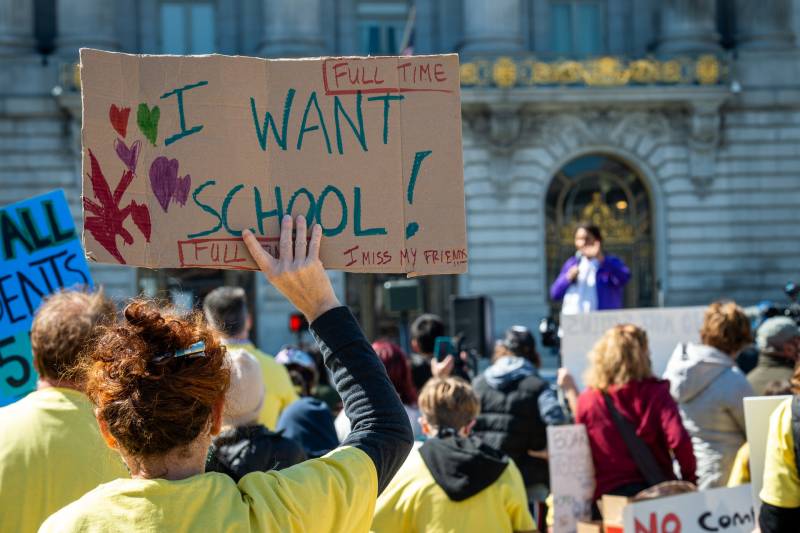We know how to keep kids safe from this virus: continue to have schools tackle multiple strategies of minimizing the risks, keeping kids and adults masked, trying to promote physical distance and ventilation, and keeping folks out of school when they have symptoms.
But we also know vaccines are incredibly effective. We know that most kids are actually getting COVID at home from close household contacts. The best way to boost safety is for whoever is eligible to get vaccinated — close household contacts and family members — to get vaccinated.
Do you think FDA approval for Pfizer for children under 12 is coming soon?
I hope so. We think that it will come by the end of this calendar year. But it does depend on the pace and findings of the trials in children, which are still ongoing. We do hope that by the end of the year, even the youngest children will be able to get vaccinated. But it already makes a tremendous difference in school settings for children 12 and older to be vaccinated.
From your research during last winter's surge before vaccines, what works to prevent transmission between kids?
We studied over 50 sites around San Francisco that supported kids and coming in person to do their online learning. We studied them for four months during the highest peak in San Francisco, much higher than current levels when vaccinations were not yet widely available. We observed over 1,700 children and over 200 adults, and there was only one case of hub-based COVID transmission and adult-to-adult case.
It really signified an overwhelming level of safety with the strategies they had in place, which at the time did not include vaccinations. The core principles we've learned that prevent COVID are masking, maximizing physical distance, keeping kids and adults out that have any COVID symptoms and maximizing ventilation.
What questions should parents and caregivers be asking their districts going into this fall?
They should be asking their districts what their COVID prevention strategies are, including the ones we've discussed, and how they're going to monitor and ensure our safety going forward. They should also ask proactively how the school is going to work in partnership with health care entities or others to ensure the availability of testing for rapid testing for any children or adults who need it, which will continue to add a layer of safety. There's much better infrastructure for that now than there has been in the past.

